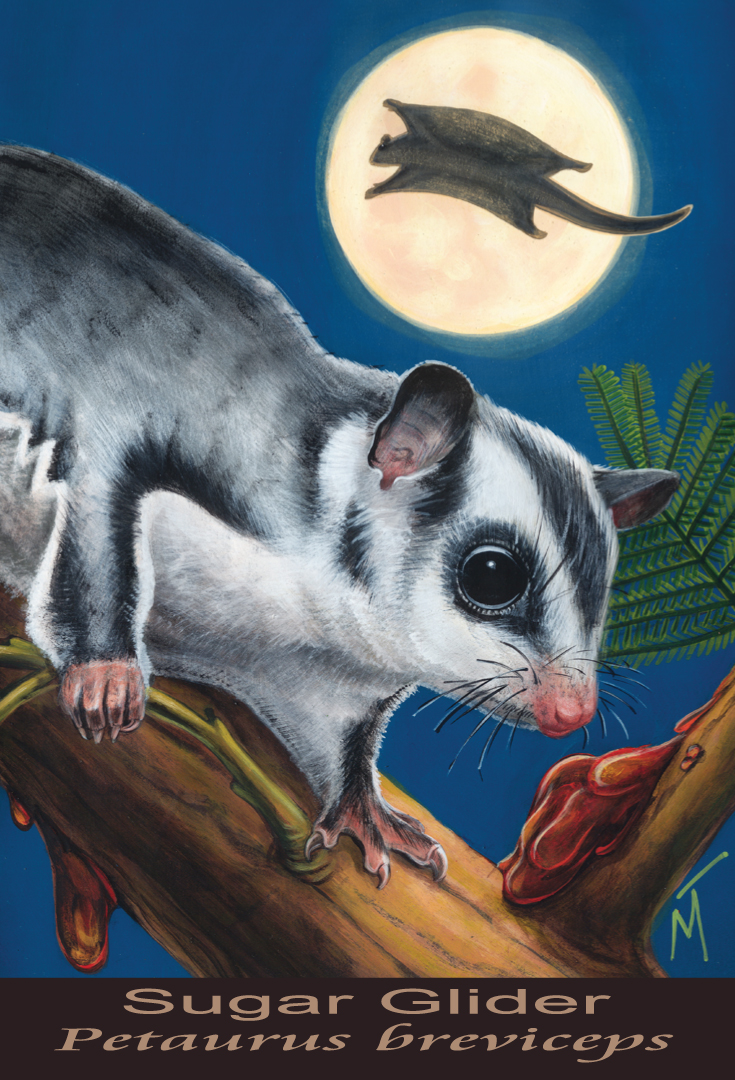
Originally inhabiting forests and woodlands, the Sugar Glider has adapted to the linear strips and patches of remnant vegetation that remain in this district. It can glide up to fifty meters between trees. It is nocturnal, sleeping during the day in a leaf lined nest in a tree hollow that it shares with its ‘clan’, typically of about five to twelve. It has a sweet tooth, eating nectar, insects and sap which it gets by biting into the trunks of trees such as Black Wattles.
Usually twins are born, becoming independent at around eight months, when they use a network of trees to move across open farm land. Sugar Gliders are preyed upon by owls, kookaburras, foxes and cats. They particularly benefit from the retention and establishment of wildlife corridors and will use nesting boxes.
Size: 170mm, tail 190mm
Illustration: Mark Trinham